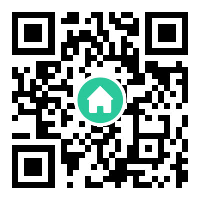Telegram channels have emerged as a powerful tool for communication, information sharing, and community building in the digital age. Unlike traditional social media platforms, these channels offer a unique blend of privacy, scalability, and flexibility, making them a preferred choice for individuals, organizations, and activists worldwide. With features like unlimited subscribers, end-to-end encryption for secret chats, and the ability to broadcast messages to massive audiences, Telegram channels are redefining how content is disseminated and consumed in an era dominated by real-time updates and decentralized networks.
The Evolution of Telegram Channels
Originally launched in 2013, Telegram gained traction as a secure messaging app focused on speed and privacy. However, the introduction of channels in 2015 marked a turning point. Designed as one-way broadcasting platforms, channels allowed administrators to share text, media, and files with subscribers without revealing participant identities. Over time, updates such as comments (via linked groups), analytics, and monetization options transformed channels into multifaceted hubs for news, education, entertainment, and even e-commerce. Today, they serve diverse purposes—from global news outlets like Reuters sharing headlines to niche communities discussing cryptocurrency trends.
Key Features Driving Popularity
Three core features distinguish Telegram channels from competitors like WhatsApp or Facebook Groups. First, anonymity ensures that subscriber lists remain hidden, protecting both users and creators in politically sensitive environments. Second, unlimited reach allows channels to grow beyond the 200,000-member cap imposed by other platforms, enabling viral content to thrive. Third, cross-platform functionality lets users access channels via apps, web browsers, or desktop clients, ensuring seamless connectivity. Additionally, the absence of algorithm-driven feeds means subscribers see every post chronologically, eliminating the risk of shadow-banning or content suppression.
Use Cases Across Industries
Telegram channels have permeated nearly every sector. In journalism, independent reporters use them to bypass censorship and share uncensored news—a critical resource in regions with state-controlled media. Educational institutions leverage channels to distribute course materials and host Q&A sessions, while businesses employ them for product launches and customer engagement. Notably, cryptocurrency projects rely heavily on channels to announce token listings and market updates, often attracting millions of followers. Even entertainment creators, such as meme pages and fan clubs, utilize channels to build loyal audiences without platform interference.
Challenges and Controversies
Despite their advantages, Telegram channels face significant scrutiny. The same privacy features that protect activists also shield malicious actors. Channels promoting misinformation, hate speech, or illegal activities—such as piracy or black-market trading—have sparked regulatory concerns. Governments in countries like India and Iran have temporarily banned Telegram, citing national security risks. Furthermore, the lack of content moderation tools places the burden of reporting abuse on users, a system critics argue is insufficient. These challenges highlight the delicate balance between free speech and accountability in decentralized platforms.
The Future of Telegram Channels
As digital landscapes evolve, Telegram channels are poised to play an even greater role. Innovations like blockchain integration for enhanced transparency or AI-driven moderation could address current limitations. Monetization features, such as paid subscriptions or in-channel tipping, may attract professional creators seeking alternatives to ad-based revenue models. Meanwhile, the rise of decentralized autonomous organizations (DAOs) could see channels becoming governance tools for community voting and proposal discussions. Ultimately, Telegram’s commitment to user-centric design will determine whether channels remain a niche tool or evolve into a mainstream communication standard.

Conclusion
Telegram channels represent more than just a messaging feature; they embody a shift toward decentralized, user-controlled information ecosystems. By combining privacy with scalability, they empower voices often silenced on traditional platforms while challenging existing norms of content regulation. As technology and societal needs advance, these channels will continue to shape how we connect, learn, and advocate in an increasingly interconnected world. Whether for activism, education, or entertainment, Telegram channels have cemented their place as a cornerstone of modern digital communication.












